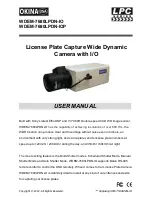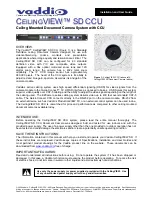
Reproduction of part or all of the contents of this document in any form is expressly prohibited other than for individual use only. All text, images and labels are property of Nimax Gmbh.
veTEC - Explaining all the parts:
1.
CNC Aluminium body:
The light but sturdy body protects the camera from damage.
2.
T2 thread:
The camera can be connected to your equipment by its female M42x0.75 (T2) thread. The backfocus
distance from the outer edge of the thread to the sensor is 17.5mm. The camera is also supplied with a 2”
nosepiece adapter. It fits on the camera’s T2 thread and allows you to insert the camera in your telescope like a
2” eyepiece.
3.
USB3 Port:
Use this port and the supplied USB cable to connect the camera to your computer. It transfers the
data to your PC and supplies the camera with electric power at the same time. The veLOX and veTEC camera
families are equipped with a USB3 port. If possible, connect it to a USB3 port on your computer (they are usually
marked with blue, to distinguish them from regular USB2 ports). High framerates are only possible through a
USB3 connection on your PC.
4.
12V DC power input:
While the USB port already supplies the camera with enough power to make exposures,
this isn’t enough for the thermoelectric cooling. Connect the 12V 3A DC power supply to enable the cooling. We
recommend using the power supply that comes with the camera, however you can connect any 12V 3A DC
power supply with 5.5x2.1 centre positive plug.
5.
USB hub:
Instead of connecting all your devices to your computer separately, you can connect some to the USB
hub integrated into the veTEC cameras. If the veTEC camera is connected to your PC, all devices will appear as
connected to it. The most common example would be to plug a GUDE series camera into the USB-Hub of the
veTEC camera. The GUIDE camera can work as autoguider while the veTEC camera is used as main imaging
camera. Note that only USB2 connections are possible through the USB hub. It is also recommended to connect
the 12V power supply to the camera, if other devices are drawing power from the USB hub.
6.
Status lights:
These LEDs show you if the camera is currently connected to a 12V power supply (PWR), connected
to a capture program on a PC (SYS), or if cooling is enabled (TEC, FAN).
1
2
3
5
4
6
7
9
8






























